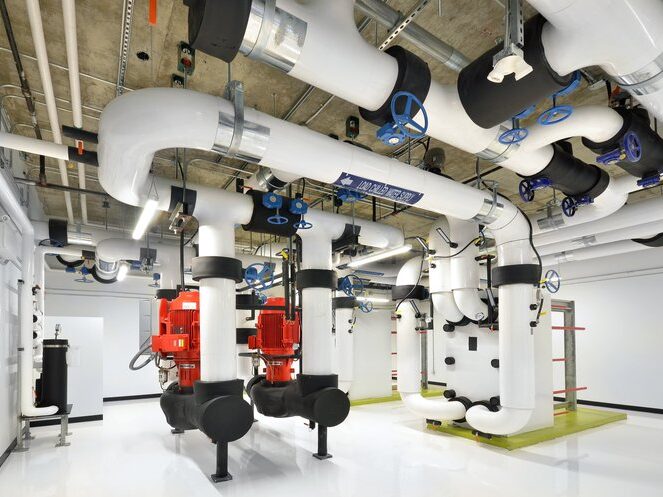The rapid development of digital landscape has led to an increasing demand for data centres, but this expansion comes with significant environmental challenges, particularly in terms of energy consumption and carbon emissions. According to the International Energy Agency (IEA), data centres globally account for nearly one per cent of the world’s electricity demand, making sustainable energy practices a critical priority for the industry.
To keep pace with growing data demands, sustainably, adopting energy-efficient technologies, renewable energy sources, and optimized cooling systems will be critical for companies to keep pace while reducing their carbon footprint. Telehouse Canada is fully committed to sustainability and environmental responsibility, aligning with KDDI’s Vision 2030, which outlines a roadmap toward achieving 100 per cent clean and renewable energy by 2025 across all data centres globally.
Beyond 2025, KDDI has committed to “net-zero” CO2 emissions by 2040, meaning enhancing operational efficiency to eliminate greenhouse gas emissions while maintaining high-performance, reliable infrastructure. A key component of Telehouse Canada’s sustainability strategy is the utilization of Enwave’s Deep Lake Water Cooling System, a pioneering, energy-efficient cooling solution that significantly reduces electricity consumption, CO2 emissions, and overall environmental impact.
Key Challenges in Reducing Data Centre Carbon Emissions
1. High Energy Consumption
Data centres are among the largest energy consumers in the digital economy, requiring vast amounts of electricity to power servers, networking equipment, and storage systems. According to the International Energy Agency (IEA), in 2022, data centres consumed an estimated 460 terawatt-hours (TWh) globally, or roughly 1.4-1.7 per cent of global electricity use. That figure is approximately 71 per cent of Canada’s total electricity generation that same year, according to the International Trade Administration. Looking ahead, the Canada Energy Regulator’s Canada’s Energy Future 2023: Energy Supply and Demand Projections to 2050 report projects that global data centre energy consumption will double by the end of 2026.
On a provincial level, a report from Ontario’s Independent Electricity System Operator (IESO), forecasts a 75 per cent increase in electricity demand by 2050, with data centres being a significant contributing factor. The rise of artificial intelligence (AI), machine learning, and high-performance computing (HPC) is driving even greater energy demand, making it crucial for data centres to find ways to reduce consumption while maintaining operational efficiency and meeting rising connectivity demand.
The transition to renewable energy sources is one of the most impactful strategies, but integrating these sources at scale requires strategic planning, investment, and infrastructure upgrades.
2. Cooling Inefficiencies and Heat Management
Cooling infrastructure is a major contributor to a data centre’s carbon footprint, as traditional cooling methods rely on energy-intensive chillers and compressors to regulate temperature. Many legacy cooling systems operate at full power at all times, leading to wasted energy and excessive operational costs. Organizations are also challenged by the need to balance cooling efficiency with performance and uptime requirements, particularly in aging facilities or those not originally designed for modern workloads.
Best Practices for Carbon Footprint Reduction
1. Transition to Renewable Energy Sources
The introduction of renewable energy sources is essential for reducing carbon emissions, and many data centres are investing in solar, wind, and hydroelectric energy to power their operations. Switching to renewable energy sources not only lowers emissions but also reduces long-term energy costs, improves operational resilience, and helps organizations meet regulatory and sustainability compliance targets.
Telehouse Canada’s approach:
- As part of the KDDI Group, we are committed to 100 per cent clean energy across all data centres by 2025, aligning with KDDI Vision 2030 sustainability goals.
- Instead of running a traditional mechanical cooling plant, Telehouse Canada utilizes Enwave’s Deep Lake Water Cooling System, which leverages the naturally cold temperature of Lake Ontario to cool its 151 and 250 Front Street data centres. By using Deep Lake Water Cooling, Telehouse also prevents the release of CO2 emissions and saves the equivalent of 100 Olympic-sized swimming pools’ worth of water annually.
- We collaborate with Toronto Hydro, a leading electricity producer in Canada and a global sustainability champion, to power our data centers. This collaboration not only ensures reliable performance and scalability but also underscores our commitment to sustainable energy solutions.

2. Optimize Cooling and Energy Efficiency
Aging data centre infrastructure often leads to excessive energy consumption due to outdated power systems, inefficient cooling technologies, and a lack of real-time monitoring solutions. Upgrading to modern cooling solutions, energy management, and smart infrastructure significantly reduces power waste and strengthens sustainability efforts.
Telehouse Canada’s approach:
- We have installed occupancy sensors and LED lighting to reduce electricity waste.
- We consistently modernize our infrastructure by replacing inefficient equipment, aiming to minimize environmental impact and support long-term sustainability.
- UPS variable module management system optimizes power usage according to changes in customer demand, adjusting loads to maximize efficiency and reduce unnecessary energy consumption.
- Variable frequency drives are installed on equipment such as air conditioners or hydronic pumps to adjust speed based on setpoints, avoiding full-power operation.
- Energy meters are included at all data centre sites and include sub-system levels to monitor usage and optimize efficiency.
- Our advanced building automation and energy management systems continuously monitor and adjust environmental energy usage to achieve optimal energy-saving set points.
As demand for digital services grows, sustainable solutions are critical for minimizing environmental impact while maintaining reliable infrastructure. Choosing a data centre with a low carbon footprint is more than regulatory compliance—it’s a strategic decision that enhances long-term energy efficiency, reduces costs, and strengthens corporate responsibility.
Telehouse is leading the way in green data centre operations, with a clear roadmap to 100% renewable energy by 2025 and “net-zero” CO2 emissions by 2040. By adopting renewable energy, improving cooling efficiency, and modernizing infrastructure, businesses can significantly lower their environmental impact while optimizing performance. Companies looking to make their data operations more sustainable can benefit from Telehouse Canada’s expertise in energy-efficient and environmentally responsible solutions.
Learn more about Telehouse Canada’s sustainability initiatives here.
